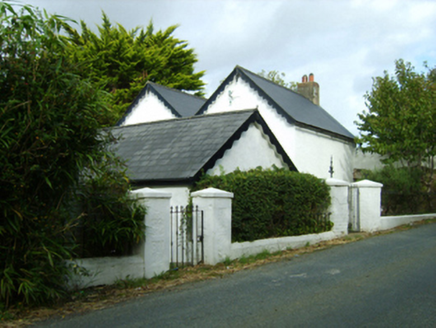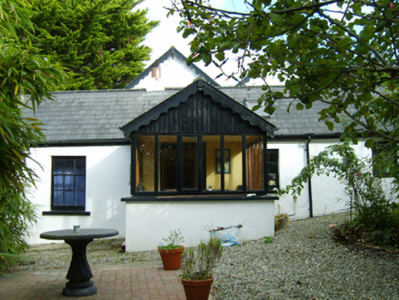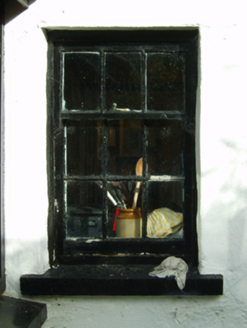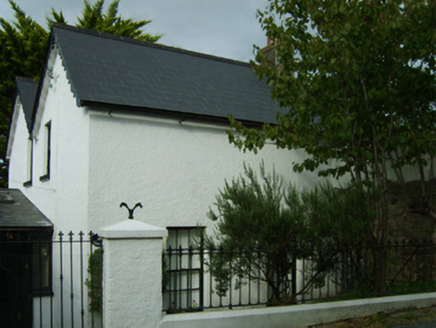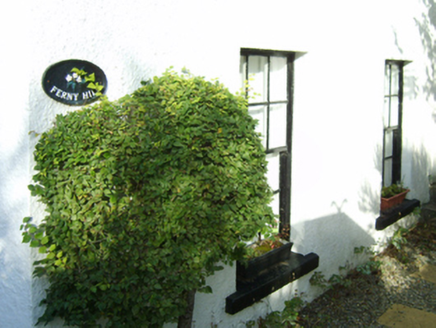Survey Data
Reg No
15704788
Rating
Regional
Categories of Special Interest
Architectural, Social
Original Use
House
Historical Use
Post office
In Use As
House
Date
1700 - 1840
Coordinates
305654, 112703
Date Recorded
24/09/2007
Date Updated
--/--/--
Description
Detached five-bay single-storey lobby entry house, extant 1840, on a cruciform plan centred on single-bay single-storey gabled projecting porch; single-bay (single-bay deep) single-storey double-pile return with half-dormer attic (east). "Improved", pre-1903, producing present composition. Occupied, 1911. Reroofed, ----. Replacement pitched artificial slate roof on a T-shaped plan centred on pitched (gabled) artificial slate roof; replacement pitched double-pile (M-profile) artificial slate roof (east), ridge tiles, cement rendered off-central chimney stack supporting terracotta pot, decorative timber bargeboards to gables on timber purlins with timber finials to apexes, and cast-iron rainwater goods on timber eaves boards retaining cast-iron downpipes. Rendered battered walls over coursed rubble stone construction; fine roughcast surface finish (east). Square-headed central door opening into house. Square-headed window openings with concrete or rendered sills, and concealed dressings framing three-over-six timber sash windows. Paired square-headed window openings (east) with cut-granite sills, and concealed dressings framing six-over-six (ground floor) or two-over-two (half-dormer attic) timber sash windows. Set perpendicular to road on a wedge-shaped site with roughcast-panelled rendered piers to perimeter having shallow pyramidal capping supporting wrought iron gate.
Appraisal
A house identified as an integral component of the vernacular heritage of Killinick by such attributes as the alignment perpendicular to the road; the rectilinear lobby entry plan form centred on an expressed, albeit later porch; the construction in unrefined local fieldstone displaying a battered silhouette; the somewhat disproportionate bias of solid to void in the massing; and the high pitched roof originally showing a thatch finish: meanwhile, aspects of the composition clearly illustrate the continued development or "improvement" of the house in the later nineteenth century. Having been well maintained, the elementary form and massing survive intact together with substantial quantities of the historic or original fabric, both to the exterior and to the interior, thus upholding the character or integrity of a house making a pleasing visual statement in sylvan street scene.
